Cryopreservation Process, Methods and Storage Solution Explored
The Cryopreservation Process
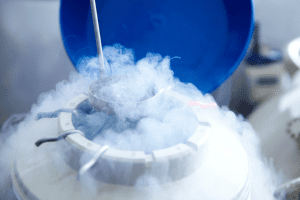
The Cryopreservation Process is where biological matter (cells, tissue, organs, etc) is preserved by cooling to a very low temperature. This process stops the normal cell functions and holds the sample in suspended animation. When the time comes to thaw the sample, normal biological function resumes.
Cryopreservation Process Steps
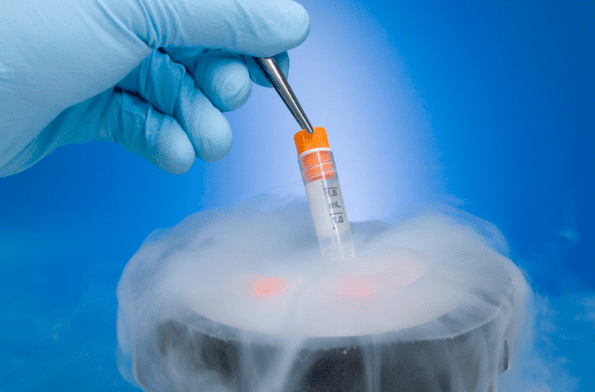
The cryopreservation process can be broken down into 5 steps:
- Isolating material: When choosing material suitable for cryopreservation, certain properties must be considered including the volume, density, pH and degree of damage already sustained by the sample.
Use of cryoprotectant agent (CPA): Certain chemicals can be used to help the cryopreservation process. CPAs are added to the sample to reduce the freezing point of the sample and slow the cooling rate. This will reduce the risk of ice formation within the sample that can lead to damage. - Freezing: There are different methods of freezing that can be employed depending on the sample and CPAs. The vitrification process and freezing using liquid nitrogen are common methods used in the cryogenic freezing.
- Cryogenic Storage: Some samples can be stored at -80 °C, however it is most common that samples would be stored at -196 °C in liquid nitrogen storage tanks.
- Removal of CPA and Thawing: When samples are ready to be thawed, the material is slowly warmed, and CPAs are removed to allow normal function to resume.
Cryopreservation Methods for Cryogenic Freezing
There are several cryopreservation methods for cryogenic freezing. Two common methods are vitrification and slow freezing. Both methods have their advantages and disadvantages that should be taken into consideration.
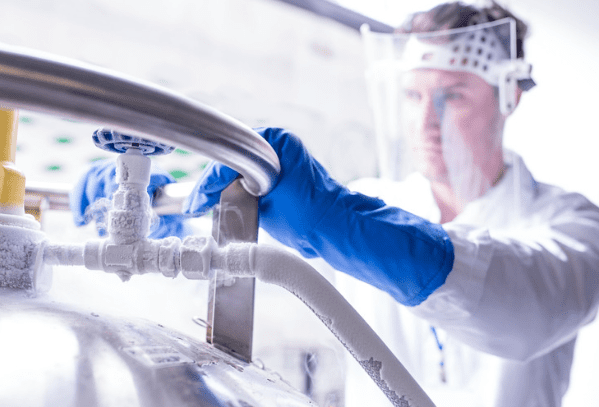
Vitrification
The vitrification cryopreservation method is when a sample is preserved in a glass-like state. Vitrification is very quick, freezing the sample almost instantaneously to avoid the formation of ice crystals and it is low in cost. Vitrification does require some technical skill, and the sample is at risk of contamination due to poor technique and possible toxicity from the high concentrations of CPA used.
Slow Freezing
Slow freezing is much simpler than vitrification and does not require the same technical skills. A lower concentration of CPA is needed, lessening the risk of toxicity however there is a higher risk of damage to the cell from the formation of ice crystals within the sample. Slow freezing can also be more costly as specialist freezing equipment is needed.
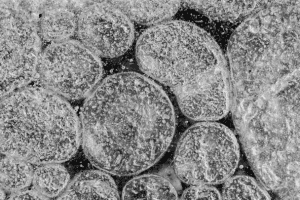
Cryopreservation Applications
There are several cryopreservation applications in the medical and research industries. Some of these applications are outlined below:
- Fertility treatments: Oocytes, sperm samples and embryos can all by cryopreserved to aid fertility treatment. This can be for donations, to store reproductive samples to delay childbearing or for individuals undergoing gonadotoxic treatments who may wish to have children.
- Biobanks: Biobanks are becoming more common in healthcare and pharmaceutical research. They are used to store human biological samples to aid research into genetics, biomarkers for diseases and personalized medicine.
- Biodiversity Conservation: Non-human samples such as other animals, plants and bacteria can also be cryopreserved. The aim of this is for future research and to try and preserve biodiversity as thousands of species face extinction. Having cryopreserved samples means that in decades to come, and as technology improves, we may be able to revive species that have become extinct or are very close to it.
Cryogenic Storage Tanks and Preservation Solutions from Froilabo
Cryovita is Froilabo’s comprehensive range of cryogenic storage systems and tanks. Offering both aluminium and stainless-steel vessels in different sizes with inventory racking systems that maximise space and efficiency of the storage tank.
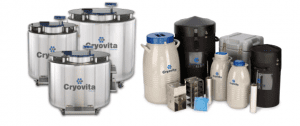 The Cryovita range includes 8 families of cryogenic storage systems and accessories. The range includes different storage types, offering liquid, vapor or dry storage depending on your needs. Storage tanks vary in size, up to 314 L, allowing up to 94500 samples to be stored. Cryovita also includes cryogenic storage accessories such as dewars, shipping containers, roller bases and withdrawal devices.
The Cryovita range includes 8 families of cryogenic storage systems and accessories. The range includes different storage types, offering liquid, vapor or dry storage depending on your needs. Storage tanks vary in size, up to 314 L, allowing up to 94500 samples to be stored. Cryovita also includes cryogenic storage accessories such as dewars, shipping containers, roller bases and withdrawal devices.
With Cryovita, Froilabo offers you complete solutions for long and short term cryogenic storage, with accessories to help meet all of your needs. To hear more about our Cryovita range, get in touch with one of our sales team to discuss how our cryogenic storage solutions can help you.
Related Reading
To find out more about the different types of Cryogenic Storage, read our blog: What is Cryogenic Storage?
Keep In Touch
Be the first to find out about our recent blogs, news and product announcements by signing up to our newsletter and following us on social media using the links below.



